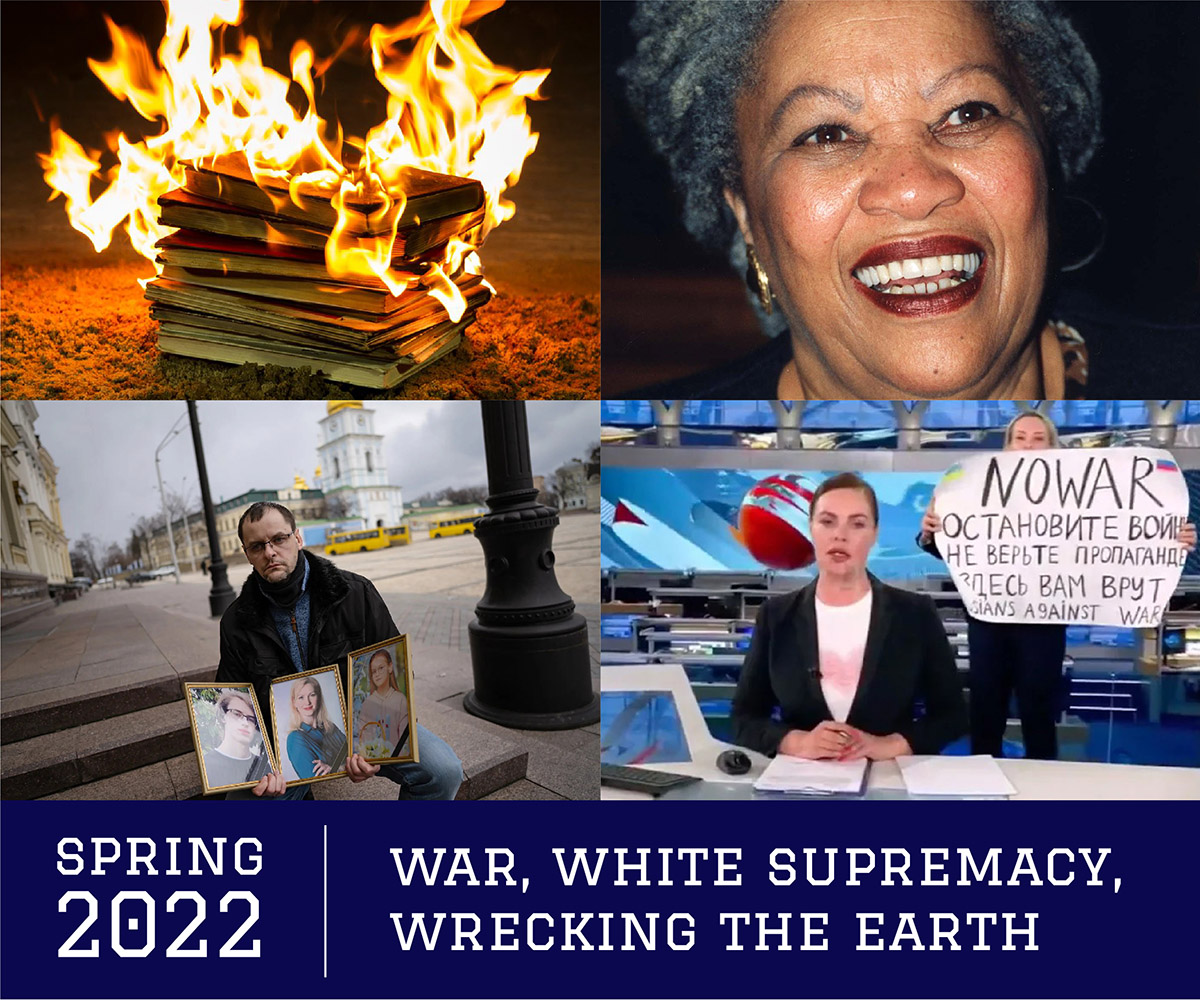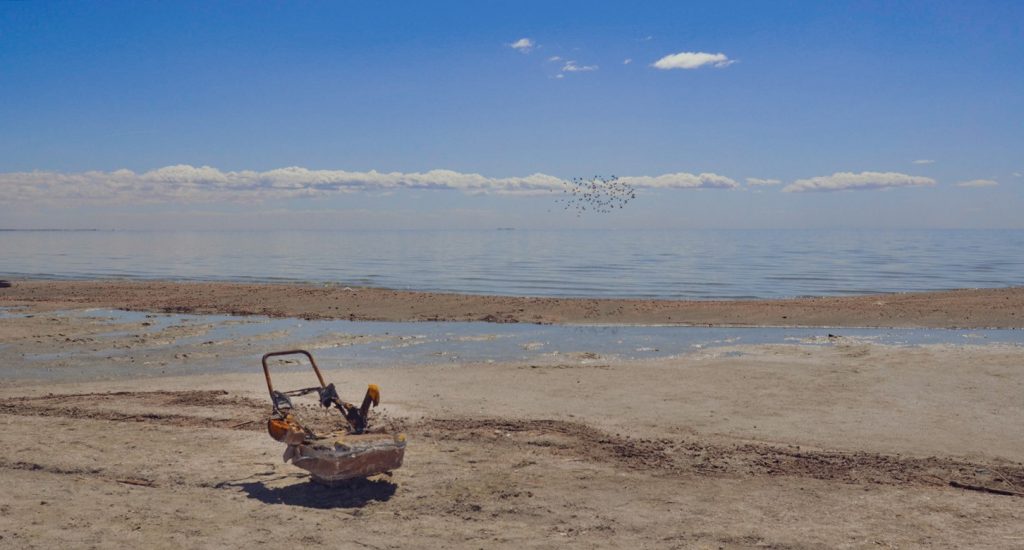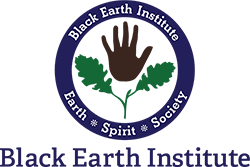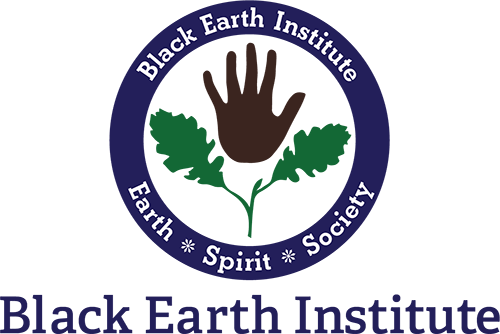
Photo credits, clockwise from upper left: Time Magazine, Wikipedia, CBC, The Boston Globe
by DJ LEE
I had visions of walking the deserted town and photographing it. But now that I’m here, I can’t make myself get out of the car. People live here. Have homes, children, pets. That, I didn’t expect. I don’t want to gawk. No one deserves to be the poster child for environmental ruin.
Besides, it’s hot. Though my car thermometer says 70 degrees, there are no shade trees. The squat buildings have sharp edges. Things look dried up, stark, shriveled. Old men ride around on old bicycles. Each street seems to be a dead end.
I have driven to the Salton Sea from a conference I’m attending in Riverside. The Salton Sea is the largest lake in California. And the strangest. “Everything’s broken,” I said aloud, almost unconsciously, when I turned off the exit called Bombay Beach a few minutes earlier. It wasn’t a judgment. I find beauty in fragments.
Still snug in my car, I inch past the opera house, a bright blue cinderblock one-story looking all laundromat-and-strip-mall-ish. A white man stands talking to a Latino man, chain link fence dividing them. They’re using big hand gestures and smiling. They nod at me. But the opera house looks as if it doesn’t trust people in sunglasses with cameras around their necks. As if it might get revenge if someone made a joke at its expense.
I drove here because of an image I’d read by the essayist Joni Tevis. She had visited the Salton Sea and alighted from her car where her feet crunched on millions of dead tilapias. Tevis had noticed the irony of Salton Sea signage. LOTS FOR SALE WITH $100 DOWN. The signs do stand out. TEN YEARS, YOU OWN IT. They seem to spell a kind of gospel message. Seem to signify like a great big-hearted poem.
The Salton Sea is more than a dead sea, for me. It’s an example of “new nature,” a site of extreme pollution and environmental destruction now being reclaimed. One example, according to journalist Elizabeth Kolbert, is Oostvaardersplassen, a former industrial site in the Netherlands that Dutch biologists and activists are rewilding. As Kolbert writes, “Perhaps it’s true that genuine wildernesses can only be destroyed, but new ‘wilderness,’ what the Dutch call ‘new nature,’ can be created.” Other examples of new nature are the Rocky Mountain Arsenal National Wildlife Refuge in Colorado, a 17,000-acre spread on a former Army chemical weapons manufacturing facility, and the Manhattan Project National Historical Parks in Los Alamos, New Mexico, Oak Ridge, Tennessee, and Hanford, Washington. These rewilded spaces feel, in some ways, wilder than those that have never been touched by human hands or feet.
Finally, I get out of the car and tread lightly on the dead tilapia, making my way down to the beach where others walk the shore with cameras, a thirty-something couple in cut-off shorts, and a couple of older women. In the distance, construction workers are building something massive with steel beams, forklifts, and piles of dirt. I’ll learn later the stage will showcase the Bombay Beach Biennale, “a renegade celebration of art, music, and philosophy that takes place on the literal edge of western civilization.”
A blaze of curiosity shoots through me. I can’t turn away from the odd sights, fragments fallen out of someone’s memory or dropped whole from a Dali painting, wrapped as they are around dreams and hallucinations. Many Dali paintings are housed in the Art Institute of Chicago, where I live. I visit often. A Chemist Lifting with Extreme Precaution the Cuticle of a Grand Piano is my particular favorite. The painting is set in what appears to be a vast salt desert. Random figures appear on different planes: a child holding a rope; a gilded woman; a ghostly, distant figure; an old white man, possibly a scholar or an artist; and the chemist himself, lifting a molten grand piano. This piano is a cuticle, Dali tells us, a membrane, a fragile liquid thing like the Salton Sea itself. Each image in the painting and the whole cries out for interpretation while it resists meaning at the same time. The painting’s elements blur, become one cloth, yet remain separate. These are the detached and symbolically rich (if only one could figure out what they meant!) people of the imagination, of night fears and daydreams, of the subconscious, that nether world we know so little about. Is this part of rewilding?
As I walk the shore of the Salton Sea, strange phantasms emerge in the heat. A rotting chair. An abandoned boat. Various plastic shapes in primary colors and pastels. Old bottles, tangled rusted wire, a pipe, a dead fish. Frozen, still, blanched as old bones. Like images from Dali, they are inexplicable.
Then I notice a nicely dressed woman and man creating something out of straw and pottery. They are Rosemary and Hunter, I learn when I mosey over. My whole being feels alive to the dead as I watch them build a sculpture with bits of glossy pottery. Each fragment is stamped and painted with names of birds and fish. “Pelican.” “Eared Grebe.” “Gull.” “Tilapia.”
“What’s that smell?” I ask. A mix of salt and oil, the cadaverine and putrescine, wafts up my nostrils.
“The lovely scent of rotting fish,” Rosemary says. She has a deep tan and a puff of white hair on her head.
Rosemary and Hunter are making a memorial, they tell me. “This material is not environmentally hazardous,” Hunter says of the gleaming pottery shards. He’s a sturdy, burly man who cuts quite a figure. “It’ll all disintegrate with the fish bones. Within our lifetime, this area will be uninhabitable because of the toxins in the air. Already,” and he gestures wide, “the people living in this area are suffering high amounts of asthma. All the kids have it. If the lake dries up, the whole valley will be poisoned because it will be such a respiratory hazard.”
I nod and tell them I don’t know that much about the Salton Sea, which prompts Rosemary to go all teacher on me.
“You have to understand,” she says with earnest brown eyebrows, “this is a rich agriculture area. Every year, runoff and insecticide go into the lake. It used to be rich with fish, but they’re dying. And because the fish are dying, the birds are losing their homeland. This is on the Pacific Flyway. Over 600 species of birds depend on the lake. But the paths are diminishing because the lake is dying.”
Gulls or little shore birds wing through the air in the distance. “I came here to poke around,” I say. I’m still nervous in this space, not wanting to be too nosy, and my words come out haltingly. “I knew the Salton Sea was an apocalyptic desert. But I didn’t know about the birds.”
“In the 50s in the 60s, the Salton Sea was the land of swimming and diving and beauty contests. Frank Sinatra and Sammy Davis Junior played here!” Hunter says in a high-spirited voice. “The parties! The boats!”
“It was a vital community. It was a destination!” Rosemary cries.
“I came from Mecca,” I say, hoping, I suppose, to let them know that the Salton Sea, for all its rewilding potential, still is a destination. “I mean, just the names here. ‘Mecca’ says it all.” I tell them I’m at an environmental history conference. “There’s a conference trip to the Joshua Tree today, and I’m like, yeah Joshua Tree sounds interesting, but the Salton Sea sounds so much more—”
“It’s been drying up for 10 years,” Rosemary cuts me off. “You can see the pile-ons are stranded. Even five years ago it wasn’t this low. The whole valley will be uninhabitable if it dries up! The school district at the south end has the highest rate of asthma in the country. In the country! It’s an environmental disaster.”
“The first time I came here 35 years ago, there were still hotels and restaurants almost down to the water,” Hunter says, a cord of sadness in his voice. “I’ve watched it slowly—” He stops. He can’t find words. He brushes his hair back from his eyes and gazes at the sculpture.
We’re silent for a long minute and then someone calls to them from the parking area. “We gotta run,” says Rosemary.
After they drive away, I walk the beach again and make some photographs. I came here expecting to find utter ruin. Instead, I discovered something like hope. I feel connected to the rubbish, the discarded, the garbage in a strange way. Maybe because it is human-made, and because it is falling back into the land. Because people care enough to hold art festivals and make bird and fish memorials.
I make my way back to the memorial. The stench is gone, or I’ve grown used to it. I sit on the sand mixed with tilapia bones and who knows what else. “At one point the white pelicans would winter here and there were literally thousands and thousands and thousands,” I remember Hunter saying. I can’t get that image—miles of black-tipped white wings—out of my mind. Sun lights on the pottery until it seems dreamlike, a vision, a portal to the rewilded.


